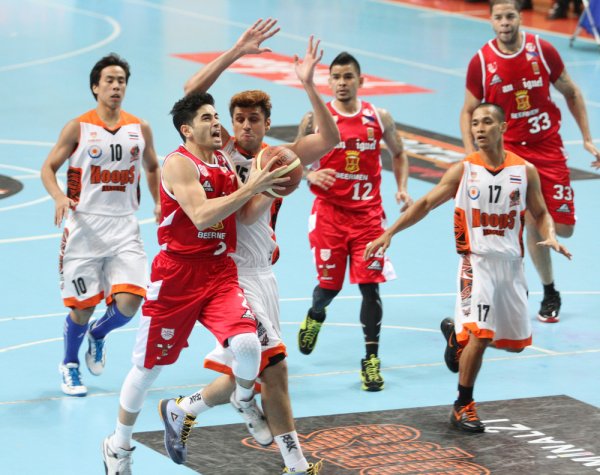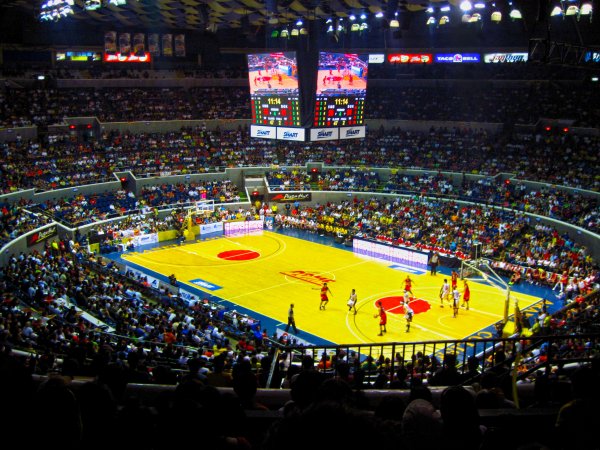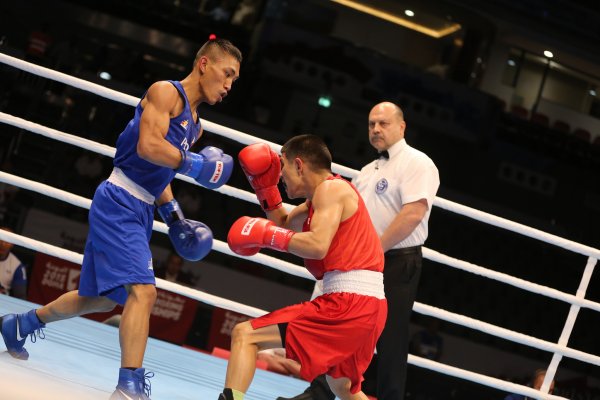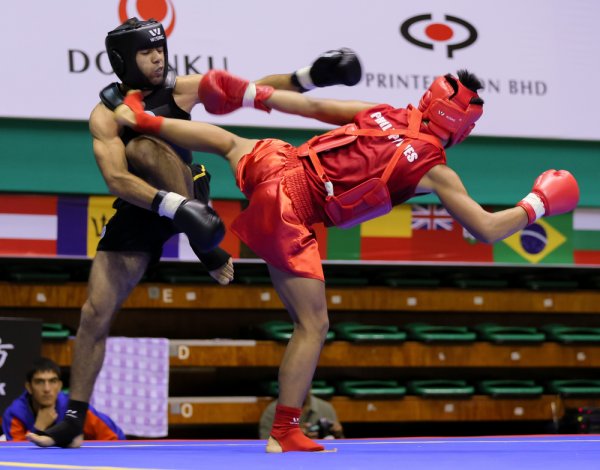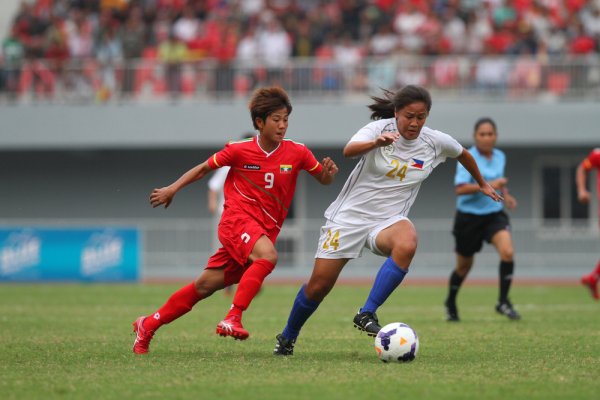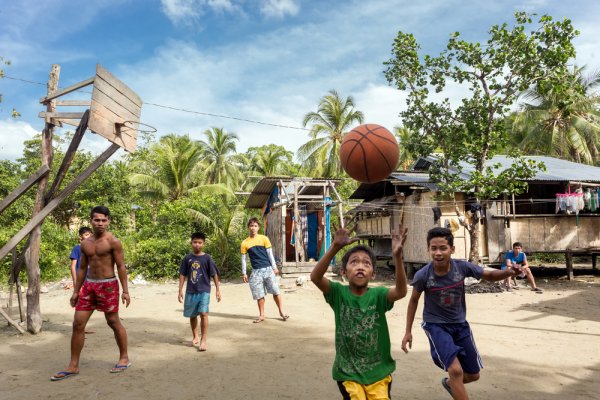Culture and Society: Sports
General
Towards the end of the 19th century, sports became more important in the Philippines. However, most Filipinos would prefer staying at home or sitting in the shaded stands and viewing a sporting event rather than exerting themselves physically in playing a sport. Excessive exposure to the sun is unbearable to many Filipinos due to the widespread belief that tanned skin is unappealing, and is the main reason for the low participation rate in outdoor sports.
Even though Philippines is made up of a group of over 7,000 islands, most of the population residing on the seaside does not know how to swim properly, so water sports are not very popular. Filipinos play a variety of sports like baseball, soccer, softball, basketball, and volleyball. Sports like boxing, golf, tennis, badminton, track and field, bowling, and cycling are some of the oldest played sports in the country and considered tradition. Different kinds of racing such as go-cart, motocross, automobile, jet ski, and Radio Control (RC) racing are also quite popular among a section of the population.
Filipinos, especially the younger ones, enjoy some outdoor sporting activities such as rock climbing, rappelling, hiking, camping, mountaineering, parachuting, and hang gliding. Kickboxing, aerobics, karate, judo, taekwondo, aikido, power lifting, figure skating, dancing, and gymnastics have their own following. Archery, target shooting, paintball shooting, and other target sports are popular among people of all ages. Cockfighting, although illegal in most countries, is said to be the king of sports in the Philippines along with sipa (kick), a traditional sport similar to sepak takraw.
The most popular national sport in the Philippines is basketball. The extent of the sport’s popularity is evident by the number of amateur and professional competitions held throughout the year. The national team frequently plays at domestic as well as international levels.
Individual Sport Participation
Participation in sports is higher among Filipino men than women. However, racquet sports are equally popular with both. Many warehouses have been converted into badminton courts, where Filipino men and women often pick up a racquet to sweat it out for a couple of hours. Sports clinics, set up by private sponsors in an attempt to encourage the youth towards healthy recreation and public parks, are frequently used for exercise programs like aerobics and dance exercises. Participation in physical activities outside of school is low with the Filipino youth. A large percentage of the youth is found to spend more than four hours a day watching TV.
Basketball and boxing are the most frequently played and enjoyed sports in Philippines, followed by billiards and soccer. Most of the sports played in the country have separate divisions for men and women, except for baseball, which is played only by men, and softball, which is played only by women. Other activities like chess, mahjong, a tile-matching game, bowling, cockfights, and volleyball are also quite popular. Children are encouraged to play a variety of sports in schools.
Private Sports Clubs
A large number of fitness clubs are available in Philippines and many of these are located in five star hotels. Often used by Filipinos during lunch hours or for morning workouts, the clubs offer a large number of services and membership options at different prices. Gyms and fitness centers located outside of hotels are reasonably priced and offer exercise equipment such as bikes, treadmill, stair climbers, and weights. Classes for aerobics and yoga are also offered. The minimum age in Philippines to join a gym or fitness center is 14 years.
Membership in some clubs is priced at about 10,000 pesos as entrance fees, apart from a monthly membership fee of 1,600 pesos. For a temporary membership, the entrance fee is roughly 5,000 pesos, but the monthly fee is the same. For students, special entrance fees of approximately 2,500 pesos and monthly fees of about 500pesos are offered .
Private Sports Clubs Listings:
Nomad Sports Club
Off Madrid Street
Merville Park Subdivision
Paranaque City
Philippines
Nomad Sports Club was started in 1914, with facilities for soccer and cricket. As time passed, Nomad began including a variety of recreational facilities in addition to sports, with the aim of serving sports enthusiasts as well as families. The club has an open membership with an entry fee and monthly dues that are well within the affordable range for most. Members gain access to many facilities like tennis and squash courts, a swimming pool, table tennis, billiards, and an ‘Adventure Playground’ for children.
Celebrity Sports Club
Capitol Hills, Capitol Drive
Diliman
Quezon City
Philippines
The Celebrity Sports Club surfaced as a state-of-the-art sports and fitness center after millions of dollars in renovations. A proprietary membership would give one access to an Olympic-size swimming pool, a 16-lane bowling center, four indoor tennis courts, three indoor badminton courts, a golf clinic, an indoor basketball court, health center and spa, aerobics and dance hall, beauty salon, gym, Internet café, two restaurants, a bar, and a ballroom. The club also has a ‘kiddie pool’ and water slides for children.
Wack Wack Golf & Country Club
Shaw Boulevard
Mandaluyong City
Philippines
This club has two 18-hole golf courses, one of which is a well-known course where tournaments like the Philippine Open and the 1977 World Cup have been held. The challenge in the vast East Course lies in its water hazards, vast greens, and the length of its fairways, whereas the West Course is less troublesome and shorter, and attracts more senior and female members. With the addition of a clubhouse, Wack Wack offers all the facilities of an international standard golf club. Professional trainers are available to help beginners.
Manila Golf & Country Club
Harvard Road
Forbes Park
Makati City
Manila
Philippines
Manila Golf and Country Club is one of the most exclusive in Manila. Although it is shorter compared to most championship courses, it offers all the challenges required by any tournament, with trees on both sides of the fairway making the course all the more interesting. The club has hosted big tournaments like the Shell’s Wonderful World of Golf and the U.S. LPGA. The club offers a practice area, and an equipment shop. Guests can visit the club if accompanied by a member.
City Sports Club
Cardinal Rosales Avenue
Cebu Business Park
Cebu City
Philippines
The City Sports Club offers facilities for families, children, and athletes. The club has a large number of facilities to offer like swimming pools, indoor and outdoor tennis courts, an indoor multi purpose court for sports like basketball, volleyball, and badminton, a 12-lane bowling center, snack bar, billiards hall, dart alley, a table tennis area, video game room, spa, sauna, steam room, massage rooms, aerobics and martial arts studio, jogging path, and a fitness gym.
School Sports
Physical Education is included among the core subjects in Filipino schools. The school sports program includes baseball, basketball, golf, cheerleading, badminton, swimming, soccer, dance, track and field, tennis, and volleyball. The University Athletic Association of the Philippines (UAAP) was established in 1938 and conducts competitions in 14 different sports between eight associated universities.
PFF (Philippine Football Federation) Ang Liga is the top league of the soccer tournaments at university level. Ang Liga pilipina, is PFF Ang Liga’s sister league, which is associated with women’s soccer. The Collegiate Champions League (CCL) is a Philippine basketball competition at the college level. Established in 2002 and modeled after the UEFA Champions League, the league aims to crown the champions of college basketball in Philippines. The National Collegiate Athletic Association (NCAA) has a Volleyball Championship that is held every year. It has three divisions, junior division for high school students, seniors division for college male students and women’s division for female college students. The Collegiate Champions League (CCL) is a Filipino collegiate basketball league similar to the UEFA Champions League. Another collegiate basketball competition is the Homegrown Invitational Cup. The National Collegiate Athletic Association (Philippines) and the University Athletic Association of the Philippines are some of the major leagues at college level.
Professional Sports
In terms of spectators and number of participants, basketball is the most popular sport in the Philippines. Apart from the National Basketball League, there is also the Embassy’s Basketball League, with teams competing in regular tournaments. Other sports leagues organized by the embassy are for sports like baseball, softball, bowling, tennis, volleyball, and pistol shooting.
There are a large number of sports personalities in Philippines who have achieved great things in international and domestic sports. Robert Jaworski, one of the best ever Filipino basketball players and also a former senator, is one of the few Filipino basketball players to have played in both the FIBA World Championship and the Summer Olympics. Carlos Loyzaga is considered the greatest international basketball player from Philippines. Loyzaga’s greatest achievements include leading the country to a bronze medal in the FIBA World Championship of 1954, and leading his team to four consecutive Asian Games gold medals and three Asian championship titles. One of the most productive basketball players in Philippine basketball history, Luis "Lou" Salvador led the Philippines to the gold medal in a match against China in 1923 by scoring 116 points, setting an all-time record. Basketball player Allan Caidic’s major wins include four Asian Games, two William Jones Cup championships, the Southeast Asian Games in 1985, and the FIBA Asia Championship in 1985-1986. He was also part of the "all-tournament Mythical Five selection" during the 1994 Asian Games basketball tournament.
Eric Buhain was the most accomplished swimmer of his generation. In 1991, after winning five gold medals and breaking two records, he was declared the "Best Male Athlete" of the SEA Games, the only Filipino to ever do so. Teofilo Yldefonso was a Filipino swimmer who won a bronze medal in the 1928 Amsterdam Summer Olympics. He won another bronze in 1932 in the Los Angeles Summer Olympics.
Boxer Mansueto Velasco was a silver medalist during the 1996 Olympics in the men's light flyweight division. Manny "Pacman" Pacquiao was World Boxing Council champion in 2003, International Boxing Federation champion in 2003, and World Boxing Association champion in 2004 in the light Heavyweight division. Francisco "Pancho Villa" Guilledo was the first Asian to win a world championship in boxing in 1923 and one of the greatest flyweights of the century. Mikee Cojuangco-Jaworski won a gold medal in the Asian Games in 2002 in the Individual Show Jumping event. Bowler Paeng Nepomuceno has won six international championships. Bong Coo is another popular name in the field of bowling, recognized for her first nine consecutive strikes in 1979.
Gerald Rosales is a professional golfer who won a silver medal in the Asian Games and was two-time champion in the Southeast Asian Games.
Other Notable Sportspeople:
Gabriel "Flash" Elorde (Boxing)
Franciso "Djando" Bustamante (Billiards)
Elfren "The Magician" Reyes (Billiards)
Dorothy Delasin (Golf)
Eugene Torre (Chess)
Popular and Dominant Teams - Basketball
The Philippines national basketball team is one of the top-performing teams from Asia, having won a bronze medal at the 1954 FIBA World Championship in the men’s division and finishing fifth in the 1936 Summer Olympics, which is the best finish of any Asian basketball team. "Team Pilipinas" (Team Philippines) has won the FIBA Asian Championship five times and four gold medals in Asian Games Men's Basketball, as well as several wins in the Southeast Asia Basketball Association tournaments and the Southeast Asian Games.
Popular and Dominant Teams - Soccer
The Ateneo Blue Eagles (soccer club) is the Ateneo de Manila University’s varsity team, which plays in the University Athletic Association of the Philippines. It is a part of UAAP, the Shakey's V-League and the Father Martin Cup.
Popular and Dominant Teams - Volleyball
Philippine Volleyball Federation is the governing body for professional volleyball in the country. It is a regular member of the Philippine Olympic Committee and has been acknowledged by the International Volleyball Federation. The top five volleyball teams in the country are USJR Volleyball Men’s team, Cebu; Assumption Antipolo, Manila; Vivacious, Parañaque; Lourdes School Quezon City Juniors, Quezon’ and Cainta Catholic College.
Before the formation of the NCAA, the Ateneo and the UP Fighting Maroons were the biggest rivals in Philippine basketball. However, shortly after the formation of NCAA, the Blue Eagles and San Beda Red Lions became established as rivals. In the 1939-1940 season of the NCAA, the Blue Eagles’ new rivalry with De Ka Salle Green Archers began, with an upset win over Ateneo. The games between these two rivals are the most anticipated matches in the country.
Women
Lydia de Vega, a two-time gold medal winner in the 100-meter dash, and a silver medal winner in the 200-meter run of the Asian Games, was declared the fastest Asian woman in the 1980s. Elma Muros was considered the 1997 Southeast Asian Games heptathlon queen for her multi-event wins. Jennifer Rosales became the first ever Filipino to win the LPGA Tour in 2004. Dorothy Delasin was the youngest person to win the Ladies’ Professional Golf Association Championship. The Philippine women's national basketball team has participated in several international tournaments.
Women’s participation in sports in the Philippines still doesn’t come close to that of men’s. In an attempt to improve women’s participation rate, the Philippine Sports Commission (PSC) has opened opportunities for female junior athletes to undergo training programs for different sporting activities, to help them develop their skill in selective sports. The Philippine Olympic Committee cooperates with the National Sports Associations (NSAs) and other sports organizations for women, like the Philippine Sports Commission (PSC), to increase women’s participation in sports and has made many major developments with their efforts.
Major Spectator Sporting Events
Philippine Basketball League
Date: Starts in April
Location: Venues throughout Philippines
Description: Started in 1983, Philippine Basketball League (PBL), a commercial semi-professional league, consists of several commercial teams.
National Basketball Conference
Date: Starts in March
Location: Venues throughout Philippines
Description: Formed in 2004,National Basketball Conference is a regional Philippine basketball league currently with 10 teams, financed by the local government and sponsors.
Philippine Basketball Association
Date: April
Location: All over Philippines
Description: Founded in 1975, the Philippine Basketball Association (PBA) is a professional basketball league, the first and oldest in Asia, and the second oldest existing league in the world, after the U.S. National Basketball Association (NBA). Since 2003, the tournament has three sub-tournaments: All Filipino, Governor’s Cup, and Commissioner's Cup. Winner of the grand finale between the winners of the three tournaments is declared the winner of the Conference Cup. The team that wins all the conferences is the "Grand Slam" champion.
Mindanao Visayas Basketball Association
Date: Starts in November
Location: Venues in the Mindanao-Visayas region
Description: The regional based Mindanao Visayas Basketball Association began operating in 2006. The participating teams in the league are from the Visayas and Mindanao regions.
Shakey's V-League (Volleyball)
Date: April
Location: All over Phillipines
Descritpion: Shakey’s V-League is a women’s college level volleyball league formed in 2004, managed by former PBA commissioner Jun Bernardino and Shakey’s Pizza. The participating teams are from different universities around the Metro Manila: Adamson University, Ateneo de Manila University, College of St. Benilde, Far Eastern University, Lyceum of the Philippines University, San Sebastian College – Recoletos, University of Saint La Salle, and University of San Jose – Recoletos.
Baseball Philippines
Date: Pilot series ends in July. Second tournament ends at the end of the year.
Location: Rizal Memorial Baseball Stadium, Manila
Description:Formed in 2007 in an attempt to bring back the popularity baseball enjoyed from the 1930s to 1960s, Baseball Philippines is the primary baseball league in the country.
PFF National Men's Open Championship (Soccer)
Date: April
Location: All over Philippines
Description: The PFF National Men’s Open Championship of the Philippine Football Federation is the national soccer championship in Philippines. Regional teams are sent by Provincial Soccer Associations to participate in the championship.
Philippine Open (Golf)
Date: March/April
Location: Golf clubs in Philippines
Description:Philippine Open, started in 1913, is one of the renowned men’s golf tournaments in the world. An official money event on the Asian Tour since 1994, it takes place at different golf courses around Philippines.
Copyright © 1993—2025 World Trade Press. All rights reserved.

 Philippines
Philippines 